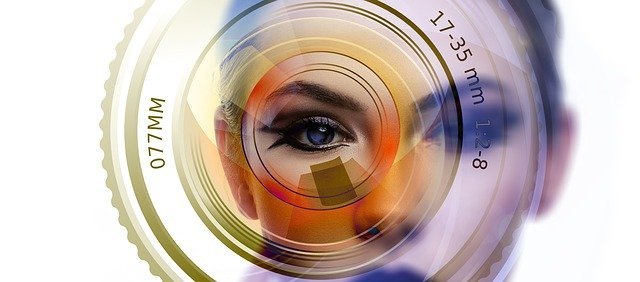
If you’re just getting started in photography, or even if you’re a seasoned expert, finding a cache of information full of tips and tricks to help you take even better photographs. With time and practice, you will develop the style and expertise that will bring you from a mere novice to an experienced photographer.
You can use several digital techniques to make photographs resemble watercolor or oil paintings as well as pencil sketches, drawings and more. Lots of companies create digital software for changing your pictures; however, Adobe Photoshop is usually considered by most to be the standard in the industry. Instantly converting photographs to pieces of art is as simple as selecting the “filter” button, choosing which medium you prefer, then clicking your selection.
When you have the shot set up, don’t delay! The longer you take, the higher the chance of the subject moving, running off or something else changing to ruin the photo. It is better if your camera takes pictures quickly.
Try new things, and don’t fear trying new techniques. A good photographer will be able to convey a sense of style with his or her pictures, and show a meaningful point of view. Stay away from taking the same type of picture that you have viewed a million times over. Try out a creative style with your skills, and try unique angles.
Try to enhance the sense of depth in your landscape photos. Have a person or an object in the foreground to provide an idea of scale for your image. Set your cameras aperture opening to a small setting, such as f/8 for most cameras or f/16 for full-frame and panoramic cameras. This will not only increase sharpness in the foreground, but in the background as well.
Don’t neglect the foreground of a photo in favor of the background when taking a landscape shot as this is what will be noticed first. Add some interesting elements or colors to your foreground to create a better frame for your landscape.
Here is a little did-you-know photo hint! Take the time to learn the ins and outs of shutter speed. On your SLR camera there are several settings; S, A, M and P. The ‘P’ button will take you to the program mode. This setting is automatic, which means you don’t have to worry about setting the shutter or aperture speed yourself. The “P” setting should be utilized when you are unsure about what you will be going to shoot.
Practice makes perfect, so buy the largest memory card you can for you camera, and enable yourself to take a plethora of practice shots. If you have a memory card that is large enough, you will never worry about being able to store additional photos on your card. A great part of larger memory space is that you can use the RAW format. This allows greater flexibility in editing.
If you want to be ready when the perfect shot presents itself, make sure you keep your batteries charged. Digital cameras with LCD screens use a ton of power, so make sure they’re fully charged prior to use. Another option is to keep a few fresh batteries in your camera’s carrying case so you never miss anything.
Often digital cameras will have a flash option that responds to dim light, making the feature available automatically. Even though these may be convenient, you may want to get an external flash with different light ranges, so that you have more control over your lighting. For this option to work, verify that your camera carries a “hot shoe” for accommodating the flash unit. A professional camera shop can help you find the right unit that will sync to your camera.
Take the time to appreciate the little things when photographing on vacation. The images may seem unimportant when you take the photographs, but the images will serve as a memory of your trip in the future. Shoot pictures of small objects like tickets and coins and also larger things like street signs and strange objects in markets.
Composition is a photographic skill worth mastering, whether you want to develop a professional talent or are simply interested in taking better pictures. If composition is lacking, your photograph as a whole will feel as if it’s lacking something. Learn composition rules and apply what you’ve learned every time you take a photograph to improve your overall photography skills.
Use limits to help yourself focus in on a subject and be more creative One such limitation would be to only photograph subjects that reflect one specific theme or idea. Try to shoot 100 different photographs from the same point or within the same room. Limitations can often times allow us to see beautiful, or unique things, that would have otherwise gone undetected.
Master photographers agree, less IS more. Cluttering your shots with too many elements is unnecessary. Beauty often comes from simple constructions.
Have you ever needed to take photos of subjects that were rained on? You can create that type of effect yourself by lightly misting the thing that you are going to photograph.
Typically, our mind like to see things ordered in a very even and centered way. To create photographs that are more interesting, try aiming your camera so that your subject is slightly off center. Be wary of your camera’s auto-focus feature as it will simply focus on whatever is directly in the middle of the lens. Focus your camera manually, then lock it before taking the picture.
When taking group photos of couples, families or larger groups, give them advice on the best type of clothing to wear in the photoraph. Colors don’t have to match, but interrelated shades will do much to enrich the total effect. Suggest neutral shades or warm colors, as they will blend with natural environments. To avoid a garish display, bright colors should be balanced with black or other neutrals whenever possible.
To help a wedding album convey the personal atmosphere, take some close-ups of small items belonging to the bride or groom, or details of decorations. You can take these photos before the ceremony begins as a warming up exercise. You could also catch some gems during this process

Practice Shots
When you travel somewhere new, try getting ideas of what you will be shooting. To find great ideas and inspiration, just take a look at a rack of different post cards. These cards will have subjects and attractions that are popular with visitors. Get your own angle on these places.
Try practicing when adjusting to new backdrops or subjects. When it comes to photography, each situation can differ greatly. By taking practice shots, you’ll have a better gauge of your environment. Lighting can change often, do not be afraid to take more practice shots in between your actual pictures.
Read the camera’s manual, please. Manuals are often bulky and thick. People tend to place them at the back of drawers or they get thrown away. However, the manual is an important source of information and should be taken advantage of. The manual often has valuable information that can assist you in taking better photographs. It can also help you avoid silly mistakes.
You can edit your pictures by yourself! There are a variety of different editing software for photos that are available to you. Choose software that has a ton of different effects and editing tools available. Use one that you may use easily too!
Use a white balance which is manual to take your photos. Using your manual white balance will dramatically change the mood and look of your photographs. It takes some practice to get things right, but you can be more creative with your photos when you utilize manual white balance.
You can add an extension on to your lenses called a filter. Filters can be easily screwed on the lens. They have numerous purposes. UV filters are the most common filters. A UV filter shields your camera lens from the rays of the sun. A filter can also help protect your camera lens if you accidently drop it.
Create a silhouette. A sunset is the traditional method for creating a silhouette, however there are many other methods as well. Any time that brightness in a backdrop exceeds that of the subject, a silhouette will be created. To shoot the perfect silhouette, position your subject by a window full of natural light; you can also use an off camera flash behind the subject. However, it’s important to remember that unfavorable features may be emphasized in the outline of someone’s body or face.
Red Eye
Consider shots from various angles, different lighting or adding to the setting to get a new perspective on a photograph. Try playing with the settings before you go and take the shot, you will then know how it will differ.
Red eye probably seems unimportant, but you probably wouldn’t want to frame a picture with that issue. To prevent red eye, do not use the flash unless you have to, and have your subject focus his or her gaze somewhere besides the lens. Some cameras are also equipped with an easy to use red eye feature.
Red eye is a minor detail but it can really ruin an otherwise noteworthy picture. To prevent red eye, do not use the flash unless you have to, and have your subject focus his or her gaze somewhere besides the lens. There are also cameras out there that have a feature that eliminates red eye.
Play around with shutter speed. Although the quickest shutter speeds are used to freeze a moment in time, consider what is possible with slower shutter speeds, such as 1/30. For example, suppose you are preparing to photograph a bicyclist in motion. The result you get is that the cyclist is sharp but the background is horizontally streaked, expressing speed.
Take a minute to pose your photographic subjects. If you find your family photos aren’t turning out very well, it could be because you have too many candid shots. Doing so helps to give you a perfect picture.
These tips will have hopefully given you a starting point and an idea of what you should expect. This advice was structured towards aiding you in honing your professional photography skills and taking better photos.
Sealing positive emotions in a great photograph will often bring up positive emotions each time it is viewed. People may appreciate the opportunity to express their true feelings, and will provide you a genuine portrait into human emotion. Consider some of the most famous photographs in out history, and you will see the realness in each picture. Let emotions be real whether your photos are of an everyday moment or something that will change your life.


